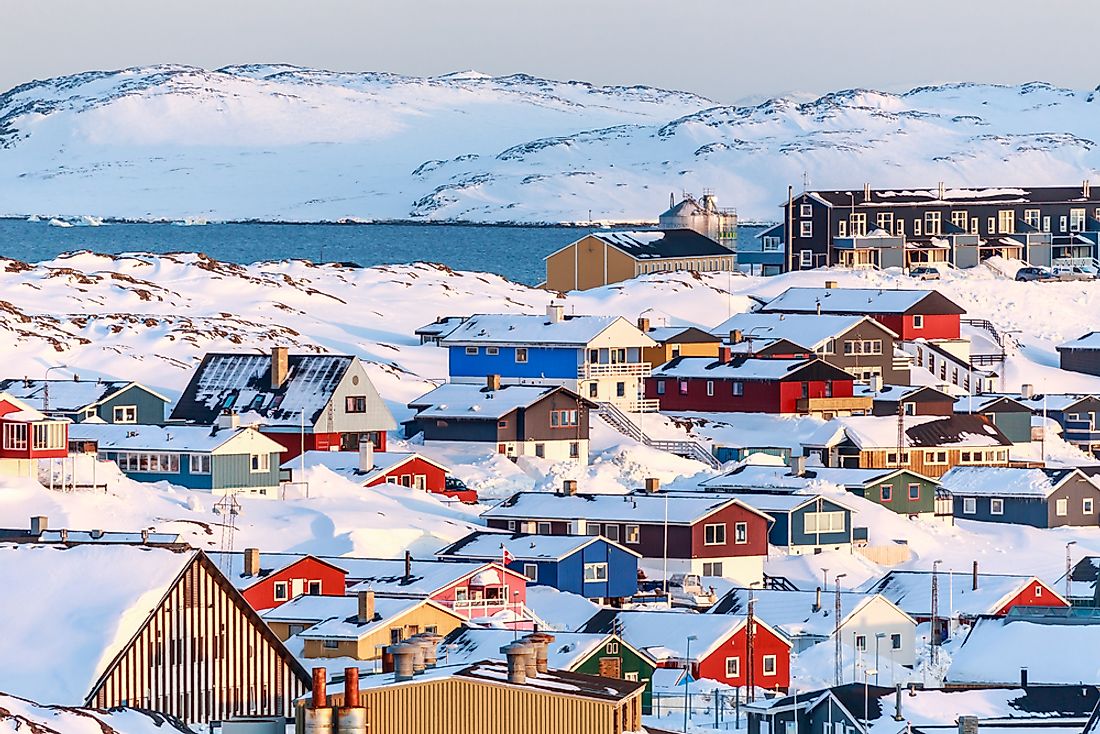The Largest Cities of Greenland

Greenland is the largest island in the world since the larger Australia is regarded as a continental landmass. It occupies an area of 836,330 square miles, and an estimated population of 56,483 makes it the world's least densely populated nation. 88% of the island's population is comprised of Greenland Inuits while the rest have European descent, largely Greenland Danes. Most of the inhabitants live near the fjords in the south-western part of the main island.
The Largest Cities Of Greenland
Nuuk
Nuuk is the Greenland's administrative capital. It boasts the largest population in the country at 16,464 to become the world's smallest capital. The city is also the northernmost capital in the world. Nuuk is the municipality of Sermersooq. The medieval settlement of Nuuk was first inhabited by the Paleo-Eskimo people in 2200 BC after which it was successively occupied by the Dorset culture, Vikings, Inuit, and Norsemen. The modern city was established in 1728 as the fort of Godt-Haab by Claus Paarss, the then royal governor. The city was renamed Nuuk in 1979. Nuuk has a tundra climate characterized by cool, short summers and cold, long, snowy winters. The city's population has increased by nearly 21% since 2000. Greenland's citizens are attracted by employment opportunities as well as the high wages in Nuuk. The city of Nuuk supports industries such as shipping business, and trade.
Sisimiut
The City of Sisimiut is home to 5,598 people. It lies in the central-western region of Greenland along the coast of Davis Strait. The area has been occupied since 2500 BCE by peoples like the Inuit, Dorset Culture, and Thule People. The General Trade Company created the urban settlement of Sisimiut in 1764. Sisimiut embraced industrialization in the 20th century facilitated by the establishment of a shipping port as well as a fish processing factory. Fishing remains the city’s main industry and the primary species harvested are halibut, shrimps, cod, and salmon. Tourism has also been gaining ground in Sisimiut.
Ilulissat
The City of Ilulissat is situated in the western region of Greenland in the Qaasuitsup municipality. The City's population of 4,541 makes it the third-biggest city in Greenland. The term Ilulissat is a direct translation of the word Kalaallisut, which means icebergs. The Ilulissat Icefjord has been listed by UNESCO as a World Heritage Site, and it has boosted Ilulissat's tourism to be the most visited destination in Greenland. Ilulissat is linked with other cities in the country by the Ilulissat Airport and the Arctic Umiaq Ferry.
Qaqortoq
Qaqortoq has the most population in Greenland's southern region at 3,229. It is in the Kujalleq municipality. The settlement was first occupied by the Saqqaq culture as far back as 4,300 years ago. Subsequent occupations featured the Dorset culture, Norse culture, and the Thule people. The urban town of Qaqortoq was established by Anders Olsen, a Dano-Norwegian trader acting on behalf of the General Trading Company in 1774. The Qaqortoq Heliport links the city with Narsarsuaq Airport which connects to the rest of the country and Europe. The city’s economy mainly features a seaport and trading as well as tourism.
Population Trend In Greenland
The population in Greenland has been decreasing in the recent years. The decreasing trend has been blamed on emigration from the country. Thousands of Greenlanders have been moving to regions such as Denmark for educational and employment opportunities.
The Largest Cities of Greenland
| Rank | Town Name | Population |
|---|---|---|
| 1 | Nuuk | 16,464 |
| 2 | Sisimiut | 5,598 |
| 3 | Ilulissat | 4,541 |
| 4 | Qaqortoq | 3,229 |
| 5 | Aasiaat | 3,142 |
| 6 | Maniitsoq | 2,670 |
| 7 | Tasiilaq | 2,017 |
| 8 | Paamiut | 1,515 |
| 9 | Narsaq | 1,503 |
| 10 | Nanortalik | 1,337 |











